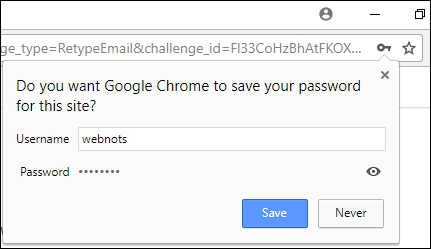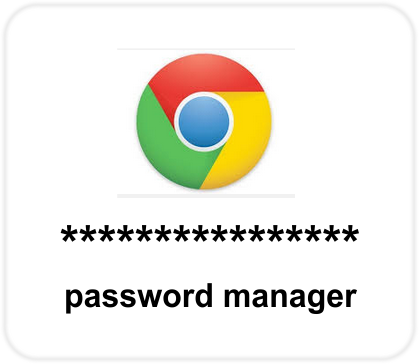Password managers are not only the most secure way of storing login information and other sensitive data, but they also have plenty of other features with which password management becomes hassle-free. One such convenient tool is the extension that can integrate into all browsers found on your device and allows the program to automatically import all information as the browser is used. Some browsers include their own in-built password managers, but it isn’t often preferable to use these in favor of specialized software.
- Google Chrome Password Manager Windows
- Google Saved Passwords
- Google Chrome Password Manager Mac
- Password Manager Google Chrome
- What Is My Google Password
This leads to a necessary question: are these in-built password management solutions by popular browsers like Google Chrome worthy competitors to true password management software? Are they safe enough to keep our most sensitive data in their online storage or are we better off with tools designed purposefully for this task?
Chrome on Windows, Mac, Chrome OS, and Linux: The password manager syncs with the Chrome browser, so it can be used in Google Chrome on any desktop or laptop platform Chrome for Android, iPhone, and iPad: Google Chrome’s mobile apps can also sync your passwords, so you can access them in the Chrome apps on Android, iPhone, and iPad. If Chrome doesn't offer your saved password: Tap password to see possible passwords. See, delete, or export passwords On your Android phone or tablet, open the Chrome app. To the right of the. Chrome History Manager 3.0. Chrome History Manager is the free software to easily view or delete browsing history of Google Chrome: 16 Jul 2016: Download. 20: Chrome Password Decryptor 12.0. ChromePasswordDecryptor is the FREE software to recover passwords stored by Google Chrome.It automatically detects & decrypts. 14 Jul 2020: Download. With windows 10 the hp client security is installed. Several times a day there is a pop-up with the question to complete the setaup of the password manager for Google Chrome. I alraedy have a password manager, so i don't need the one that comes with the hp security client. How can i turn this pas. If you’re using Google Chrome, you may be using the browser password manager to save and fill logins for different websites. The built-in password manager saves you time and the hassle of remembering every password. When it comes to protecting yourself online, you need more.
Top Google Chrome Password Managers
Sticky Password
Despite being minimalist in design, Sticky Password is a powerhouse that is capable of effectively securing your most valuable data in a locally encrypted vault. Its browser add-on is more basic but it still integrates into 16 different browsers, including Google Chrome.
Use our special promotional code below and if you haven’t used RoboForm before you can enjoy RoboForm Everywhere or Family for as low as $1.16 per month, saving 30% on the subscription fees.
The extension is capable of adding and displaying the necessary credentials – login info and identities – but in order to protect your data modifications can only be made in the vault. Both the software and the extension should be locked when necessary, therefore preventing any login information from being accessed until the master password is provided.
Syncing Options
Evaluation of Passwords
And with extras like offline syncing, a handy mobile app and password evaluation all available for free, Sticky Password is highly recommended, even before the premium features come into play. To enjoy all of Sticky Password’s features – and a 30-day money back guarantee – it’s best to either pick the cost-friendly $2.50 per month subscription plan or buy a lifetime license.
LastPass
Google Chrome Password Manager Windows
LastPass is an ideal choice for those who’d like to use their password manager across multiple devices without the need to pay extra. The software has multiple advantages, such as its web-based nature for simple integration, the sharing of credentials without leaving the app’s secure environment, creating a family vault, providing emergency access, and having your passwords organized to your preference.
The app’s add-on is compatible with all known browsers, including Google Chrome and even Microsoft Edge. But unlike its competitors, the Chrome extension serves as the gatekeeper to your LastPass vault, which can only be accessed by entering the master password via this add-on. Additionally, the LastPass add-on can organize passwords the same way they appear in the vault and has the added bonus of a built-in password generator, too.
Categories Within the Vault
The Extension's Password Generator
LastPass is a free of charge password generator, but even the premium version won’t set you back more than $2 per month.
1Password

For many years 1Password was the password manager for Mac users, but since it’s become available to PC users as well it became one of the most popular password management programs for various reasons. One such reason is the software’s simple and straightforward nature, but we could also draw attention to other key features, such as being able to create a family or team account for safe password sharing, the one-time password feature, the convenient 1Password mini, and seamless import of passwords via CSV files.
The 1Password Chrome extension is basically a browser version of 1Password mini with all of its features: the handy password generator alongside all your credentials from your 1Password account displayed according to their respective types, tags, folders, and most used passwords.

The One-Time Password Feature
1Password Browser Extension
Google Saved Passwords
Although 1Password is still available to purchase as a license, it’s best to opt for the subscription plan that only costs $2.99 per month for individual accounts or $4.99 for the family account.
Password Managers vs Smart Lock for Passwords
Google’s native Smart Lock is basic yet perfect. In fact, Smart Lock is super simple to use: every time new information is entered, Google issues a prompt to save that data so it is then displayed during future login attempts. Moreover, this solution is cross-platform, meaning that all saved data is accessible on all Google products by going to the respective settings or visiting a dedicated site. And as a nice extra, certain Android phones can be paired with Android Wear so that it serves as a secondary authenticator, too.
However, a huge downside of Smart Lock is that it only works with Google products, unlike password managers, which are compatible with all major browsers via extensions. Granted, users still have to download a usually pay-only program and will need to memorize a so-called master password to access the password vault, but these are small nuisances compared to the advantages of password managers. First, they import data directly from browsers, making them super convenient. Second, they are extremely safe thanks to features like military-grade encryption, in-built password generators and two-factor authentication. Typically they are able to store all kinds of data as well, not only passwords and web forms.

Integrating Browser Data to Sticky Password
Saving Server Credentials to 1Password
Exporting Passwords From Google Chrome
Unfortunately simply exporting the necessary data from Chrome is out of question due to the fact that, as of build 61, Google has axed the in-built import and export option. This makes it mandatory to either use third party software or an extension to export everything out of Chrome, a solution that is not always recommended due to the risk of data sniffing and accidentally downloading malware.
The simplest and safest way to export the data is to use a password manager and its browser extension, since it automatically imports everything from the selected browser to the program’s encrypted vault where it can be accessed by nobody else but you. Although these browser extensions are far from perfect – considering how many bugs have been discovered recently – password managers themselves still remain fully functional without them, and such issues are usually patched out within a short period of time.
The Discontinued In-built Import/Export Feature in Chrome
Third Party App ChromePass
There are other solutions for getting those passwords out of Chrome, such as ChromePass, a program that is not only free, but doesn’t even require installation either. To make things better, the software allows passwords to be saved in various formats (HTML or CSV for example), and it also displays the strength of each password.
Best Password Managers of 2021
| Rank | Provider | Info | Visit |
| Editor's Choice 2021 |
| ||
| |||
|
Google Chrome Password Manager Mac
Password Security in Google Chrome
Google Chrome is like Two-Face from the Batman comics: the gentle side hides a fast, cross-platform browser, but its dark half is a gluttonous RAM consumer that has a rather dubious privacy policy that many users are not fully aware of. As a matter of fact, this privacy policy is the main reason why newcomers to Chrome are warned by experts to either completely avoid the use of Google’s Smart Lock altogether or consider some major security upgrades.
The problem with Google’s Smart Lock is that it is pretty easy for unwanted parties to access. All they need to do is simply launch the browser in any mode, go to the advanced settings – which takes only two clicks – and voila, your unencrypted passwords are served to them on a silver plate. And to rub more salt into the wound, Chrome never asks for the Google password when this storage is being accessed.
This is why it is important to take a deep dive into Chrome’s settings before the first use – and thankfully most privacy issues can be eliminated with a flick of a switch. There are more obvious settings like disabling website tracking and turning on the dangerous site filter. But to truly ensure a safe browsing session it’s best to ensure Chrome automatically deletes cookies when the browser is closed, disable the auto-running of plugins and JavaScript, and never let sensitive data sync across devices unless it’s strictly necessary.
Google Chrome Sync
Speaking of syncing, it’s time to introduce Google Sync, a feature that basically acts as the vein that transfers all data across devices whenever logging into Chrome’s browser with a Google account. By default Google syncs almost everything, from apps and extensions to history, auto-fill data and passwords – which is highly convenient but is also a major vulnerability regarding privacy.
/cdn.vox-cdn.com/uploads/chorus_image/image/68520717/microsoftauthenticator.0.jpg)
Thankfully Chrome allows you to decide which items should be synced when signing in to other Chrome browsers and, as a nice addition, a passphrase can be set as well to ensure that nobody will access your Chrome data should your Google account get hacked.
Best Password Managers of 2021
| Rank | Provider | Info | Visit |
| Editor's Choice 2021 |
| ||
| |||
|
Password Manager Google Chrome
Get the Best Deals on Password Managers
What Is My Google Password
Subscribe to our monthly newsletter to get the best deals, free trials and discounts on password managers.
